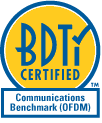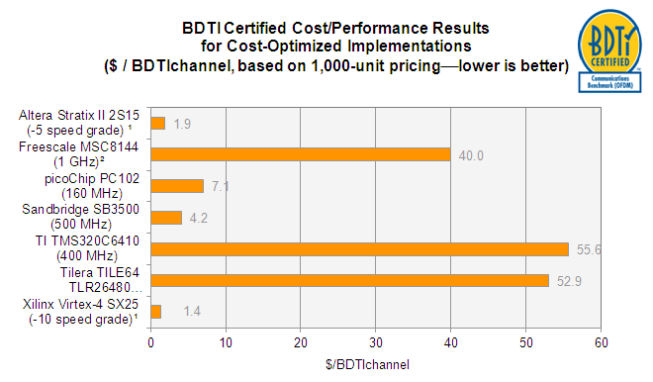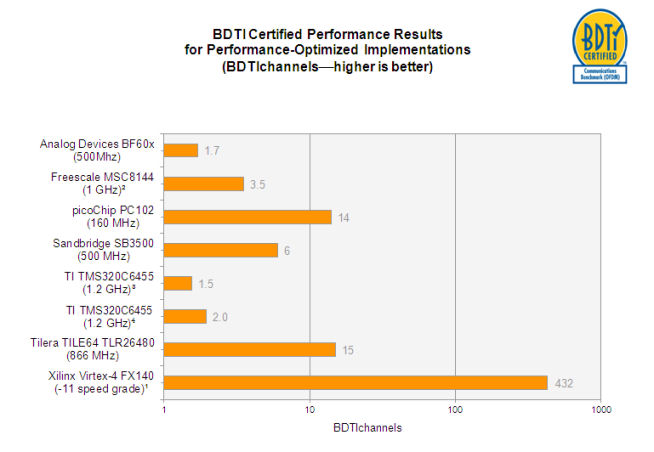 The BDTI OFDM Receiver Benchmark™ is an application-oriented benchmark based on an orthogonal frequency division multiplexing (OFDM) receiver. It is designed to be representative of the processing found in communications equipment for applications such as DSL, cable modems, and wireless systems.
The BDTI OFDM Receiver Benchmark™ is an application-oriented benchmark based on an orthogonal frequency division multiplexing (OFDM) receiver. It is designed to be representative of the processing found in communications equipment for applications such as DSL, cable modems, and wireless systems.
The BDTI OFDM Receiver Benchmark™ is used to evaluate and compare the performance of DSPs, general-purpose processors, multi-core processors, and FPGAs, as well as other types of processing engines. This benchmark provides two classes of results: high-capacity (maximum channels) results and low-cost (minimum cost per channel) results. Within a given chip family, vendors may use different chips and different benchmark implementations to generate these two results.
To enable quick, realistic comparisons between chips, BDTI publishes high-capacity (number of BDTIchannels) and low-cost ($/BDTIchannel) benchmark scores free of charge. On the high-capacity metric, a higher BDTIchannels score indicates higher performance. On the low-cost metric, a lower $/BDTIchannel score indicates better cost-performance (i.e., lower cost for each BDTIchannel). As mentioned above, for a given chip family vendors may use different benchmark implementations and different chips to generate these two results.
BDTI Certified OFDM Receiver Benchmark Results
Figures 1 and 2 present BDTI Certified low-cost and high-capacity results for the BDTI OFDM Receiver Benchmark.

Figure 1: BDTI OFDM Receiver Benchmark scores for low-cost ($/BDTIchannel) configuration.
Notes: [1] The definitions of speed grades vary among vendors. Therefore, a -5 speed grade for a Xilinx chip is not necessarily equivalent to a -5 speed grade for an Altera chip. For more information on speed grades visit the respective vendor websites. [2] Estimated performance based on related benchmark implementations.

Figure 2: BDTI OFDM Receiver Benchmark scores for high-capacity configuration (maximum number of supported BDTIchannels on the device). Note log scale on X axis.
Notes: [1] The definitions of speed grades vary among vendors. Therefore, a -5 speed grade for a Xilinx chip is not necessarily equivalent to a -5 speed grade for an Altera chip. For more information on speed grades visit the respective vendor websites. [2] Estimated performance based on related benchmark implementations. [3] Without using Viterbi coprocessor. [4] Using Viterbi coprocessor.
No reproduction or reuse of the above information is permitted without the express authorization of BDTI. For reproduction permission or to obtain benchmark results for your processing engine, please contact BDTI.
